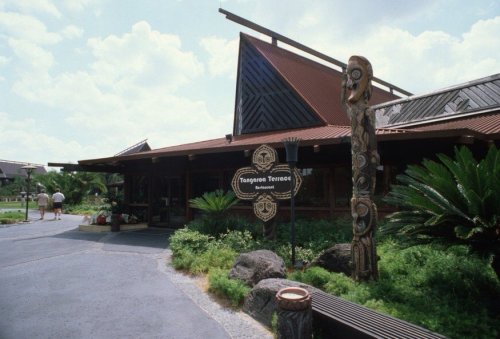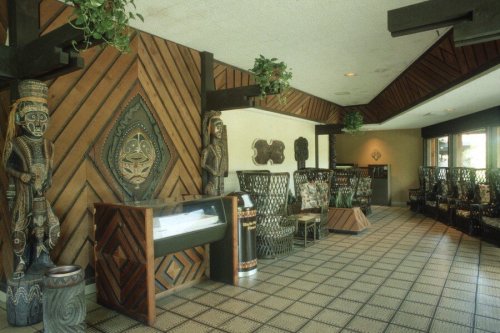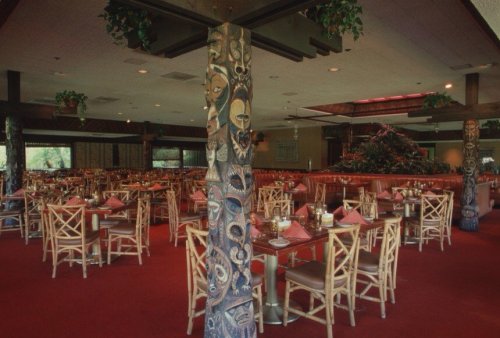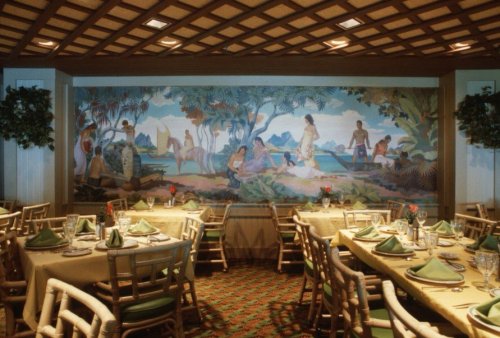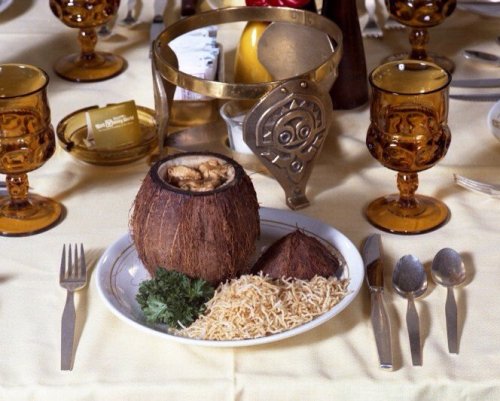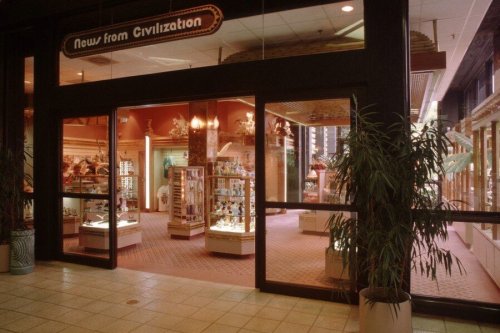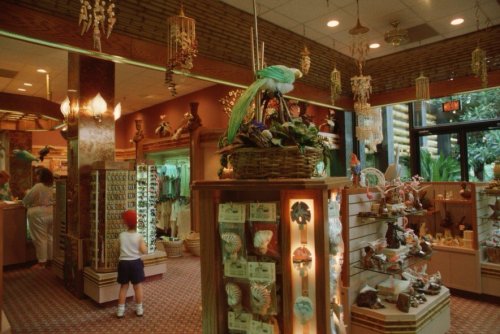epcotexplorer:I think Tumblr is having issues and this isn’t showing up in feeds. It’s
epcotexplorer: I think Tumblr is having issues and this isn’t showing up in feeds. It’s on my homepage, though. Trying again! epcotexplorer: Polynesian Potpourri: A Tour of the Village In honor of its opening 43 years ago, today, let’s take a quick jaunt back to the Polynesian Village of the 1970s. The Polynesian is currently in the throes of a radical aesthetic change. Refurbishment work began earlier this year to begin the process of removing some of the older features of the resort, with most of the changes centered in the Grand Ceremonial House. By the time the work is complete, the waterfalls that graced the entrance will be woefully gone, replaced by a more open area adorned with Japanese float lamps, and a large statue of the nameless (but popularly called “Tiki Shrug”) tiki deity that has served as the resort’s mascot since 1971. What’s interesting, however, is that these are not the first large scale changes to be seen at the Polynesian Village since its inception. When the resort first opened, and until the late 80s and early 90s, the Polynesian boasted a much more organic aesthetic in some areas. Different textures, color pallets, and art dominated the landscape. And of course, different eateries and facilities also graced the southern banks of the Seven Seas Lagoon. Today’s look back is by no means exhaustive or comprehensive, but features what I think are some striking examples of the aesthetic shifts made at the Polynesian Village over the years. First, the Tangaroa Terrace restaurant. This building is still standing at the resort, but only as a Cast Member break room and training center. This picture allows you to really see the original color scheme and more organic texture used in the early days of the resort. Now, brighter reds, yellows, and oranges cover the A-frame architecture, though the deep browns remain. The original woodgrain, while more authentic, has given way to something more akin to a mid-century styling. The same goes for the interior and entrance to the Tangaroa Terrace, as seen in the pictures 2 and 3. Authentic wooden motifs graced the entrance and Polynesian inspired chairs and tables furnished these spaces. What’s really notable in the first three pictures are the tiki statues that populate the restaurant. These four pieces were carved by Oceanic Arts, a duo of two artists based in Southern California, who can be attributed to the proliferation of Polynesian and tiki art and culture in the 1950s and 60s. As far as I know, the two male and female warrior statues in the entry hall are still there (at least they were in 2010, when I got to see them!) as is the replica of the Enchanted Tiki Room column in the dining room. Oceanic Arts also carved many of the original signs around the village, which are still in use today. Picture 4 shows off a lovely mural of Polynesian agriculture and some really striking bamboo motif chairs. More on this later. Next up is a glamor shot of a meal at the Tangaroa Terrace. But who cares about the food! Look at the “Tiki Shrug” logo on the candle holder! Look at those amber glasses! Look at the Walt Disney World logo matchbook and ashtray! And, although you can’t see it in this shot, the white plate here is made out of fine china and boasts a small, gold Disney World “D” logo along the crest. This is the epitome of 70’s Vacation Kingdom class. Moving onto picture 6: Recreation and Bob Around Boats! These funky little vessels were available to rent for excisions onto the Seven Seas Lagoon. Complete with a sound system, the Bob Around Boats carried a family of four, and cost 8 dollars an hour. Sadly, they didn’t live beyond the first decade of the Walt Disney World Resort, as the resort’s initially strong focus on recreation and the theme parks slowly gave way to the parks and more heavy thematic offerings. EPCOT Center, for example. The next two pictures (7 and 8) show off one of the original retail locations at the hotel: News from Civilization. As seen above, this shop offered sundries and themed merchandise unique to the Polynesian Village. Up for sale? Tapa cloth, mobiles of shells, beachcomber art… This was, essentially, an extension of Adventureland and is a perfect example of how diverse Disney’s original merchandise was. Some ‘Polynesian Village’ branded items were available, but this shop specialized in unique and thematic wares. Also, if you look out the back window, you can see the bamboo siding to the Great Ceremonial House. Later, this space became the Wyland Art Gallery. Now, the shop has been effectively turned into an exterior space, and functions as the Pineapple Lanai, the new home to the much craved and beloved Dole Whip. The final picture (9) offers a wonderful vista of the original lobby in the Great Ceremonial House. Of course, the waterfall fountain is brand new in this shot, but look at how lush it was during those first few years! You can barely see the rocks and falls; greenery and tropical trees dominate the scene. Also notice the furniture: while not as obviously Polynesian (remember those bamboo chairs?) these pieces are much more mid century modern than preciously seen. The flat lines, angular shapes and dark textures carry the spirit of the 1950s and 60s tiki craze into the 1970s. In his new book, Tiki Pop on the American tiki culture craze, Sven Kirsten argues that this aesthetic was the result of the merging of space age characteristics and exotica. Given how closely tied the two aesthetics are in not only style, but time, I would certainly say that that is a plausible conclusion. Seeing that the last picture above doesn’t afford a glimpse of the tiles and their amazing lime green colors, please join me in basking in the original aesthetic for the Great Ceremonial House. Where most of the resort was more organic and authentic, perhaps these lurid tiles were a delightful outlier. By the early 90s, they had been replaced by the dark, rough igneous stone that currently tiles the Ceremonial House floor. In short, pictures like these serve as a reminder that Walt Disney World, while artful, is also fluid and malleable. It is constantly changing. I will forever miss the waterfalls in the Great Ceremonial House, but I find comfort in the fact that they were changed over the years, as did the entire look and feel of the Polynesian Village. On this, the 43rd anniversary of the resort and the hotel, I would hope that its brighter days are before it and that the new iteration of the Polynesian might be as well respected and beloved by others as it has already been for the past four decades. Happy 43rd, Polynesian Village. -- source link
Tumblr Blog : epcotexplorer.tumblr.com
